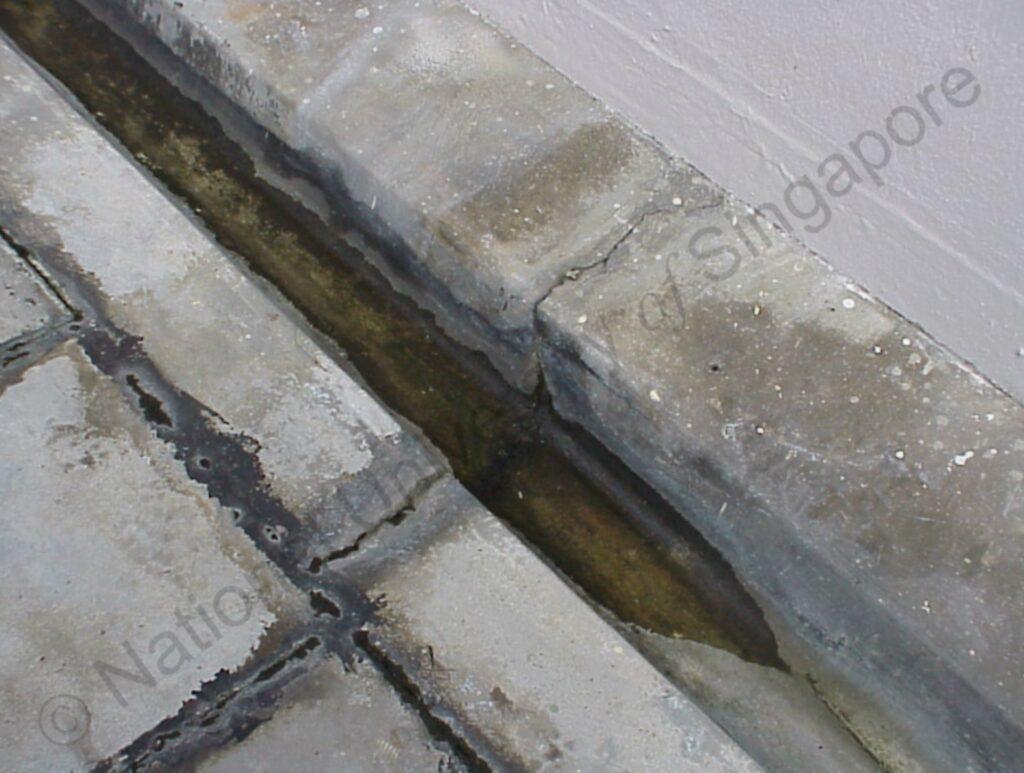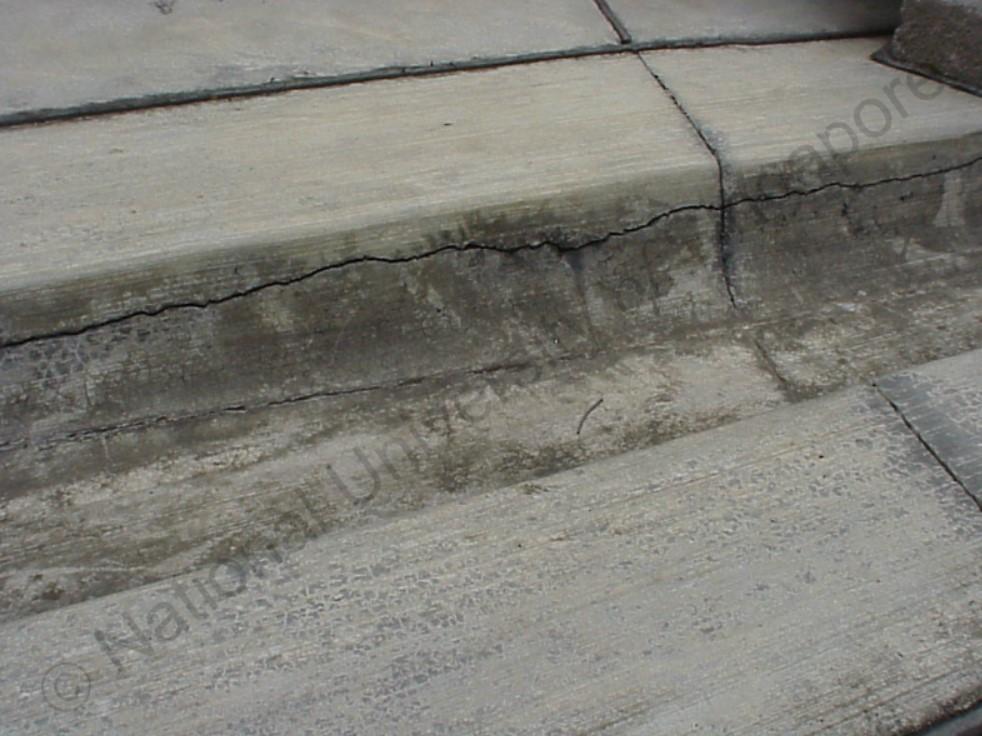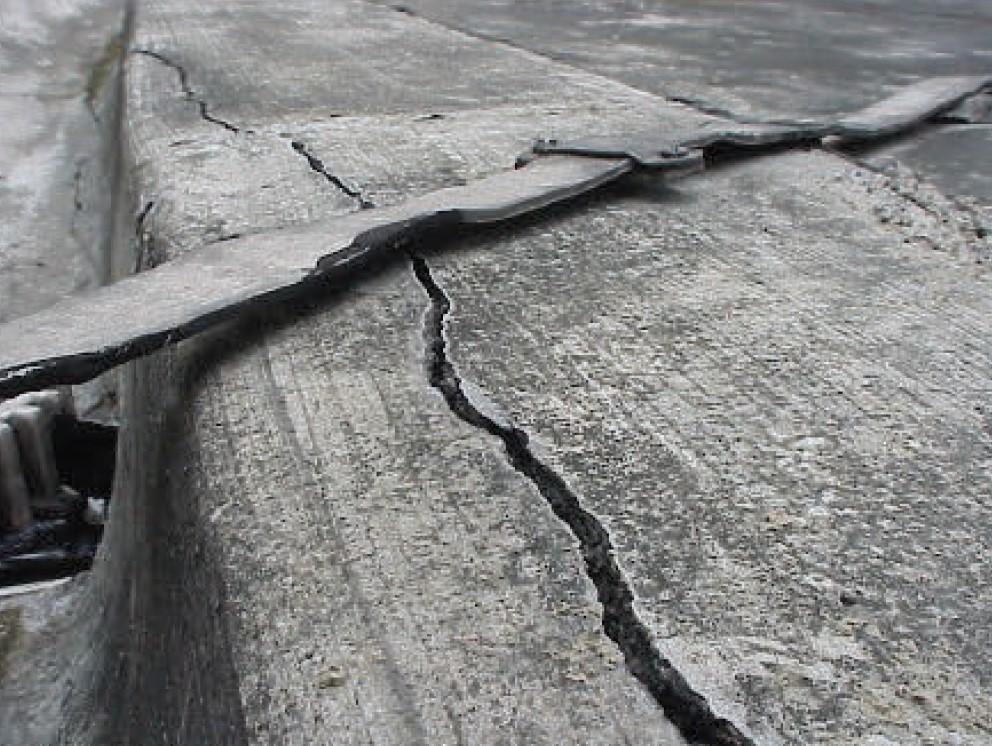Case 1
- Introduction
- Causes of Defects
- Good Practices
- Standards
- Maintenance and Diagnostics
- Remedial
- Similar Cases
- References
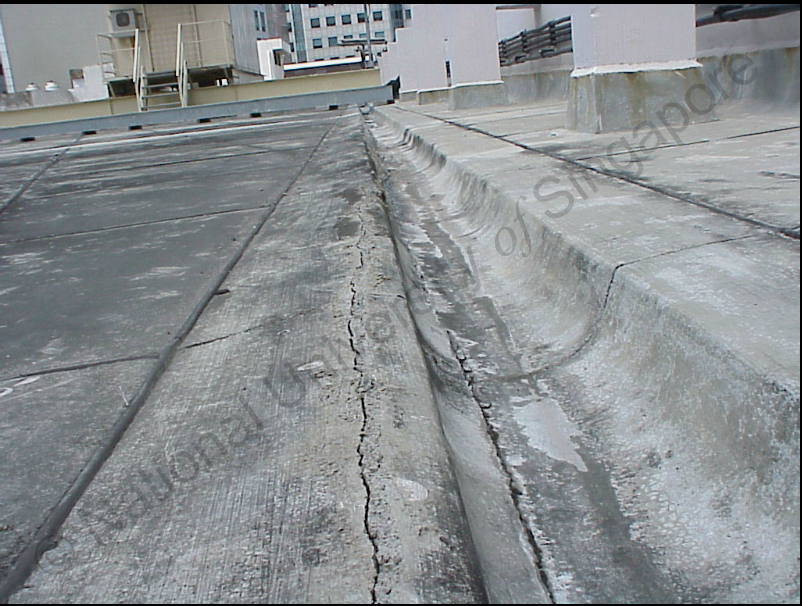
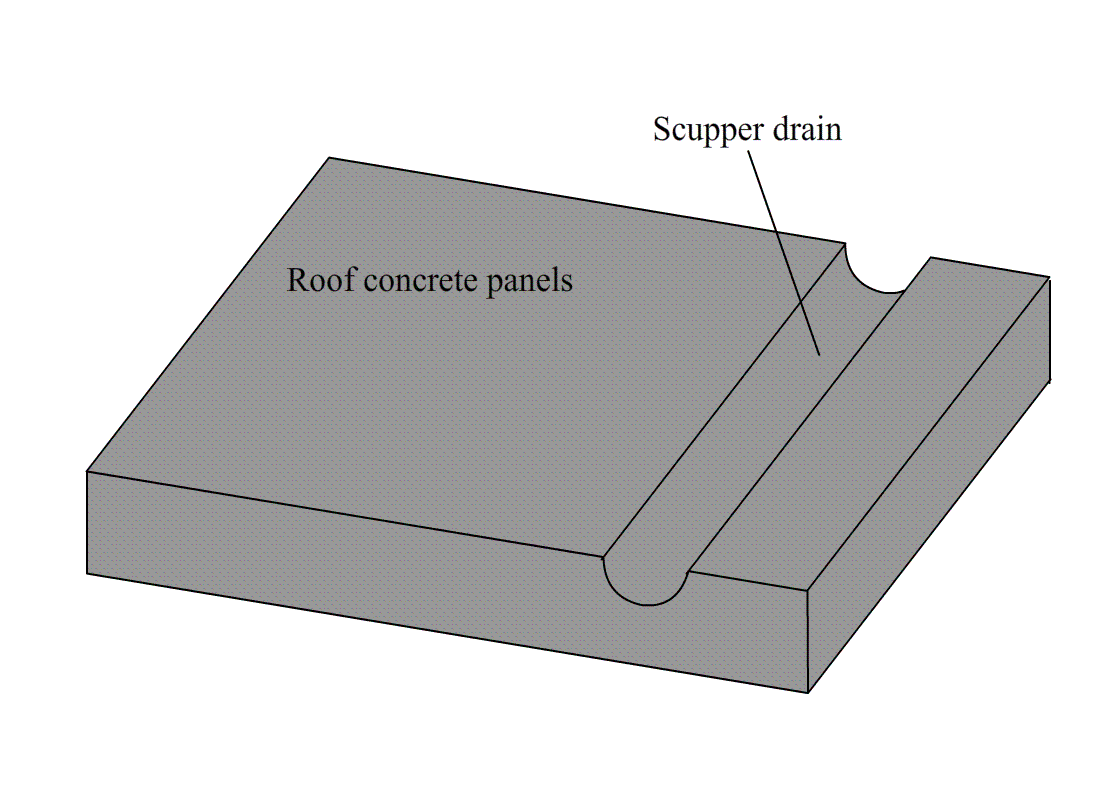
Introduction
Type of Building: Commercial
In this case, a line of cracks is observed to have developed along the side of the scupper drain. The roof is finished with concrete panels.
Concrete is strong in compressive but weak in tensile strength. Cracking occurs when the tensile stresses exceed the tensile strength of the material. Tensile stresses on a concrete roof deck could be built up due to shrinkage, thermal and/or moisture contraction/expansion, restraint to shortening/loading, differential settlement/movement, corrosion, alkali–silica reaction, etc.
Cracking on a roof deck is a concern as it could lead to water leakage and also provide easy access for the infiltration of aggressive substances to the level of reinforcing steel, resulting in corrosion. Cracks often found on concrete roof decks are at stress-concentrated areas such as openings, penetrations, upturns, corners, interfaces and joints.
